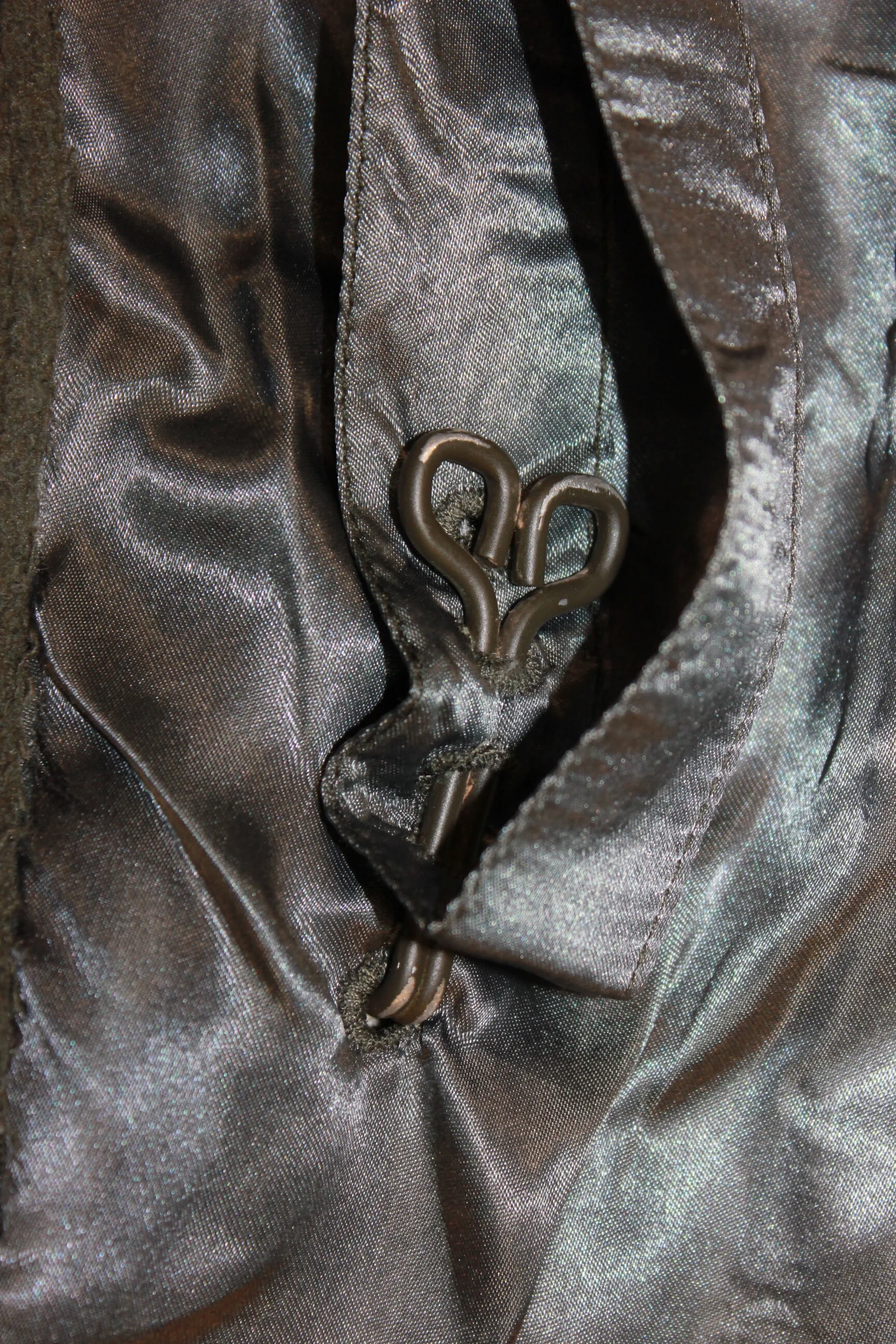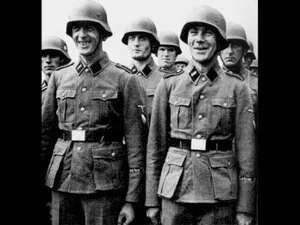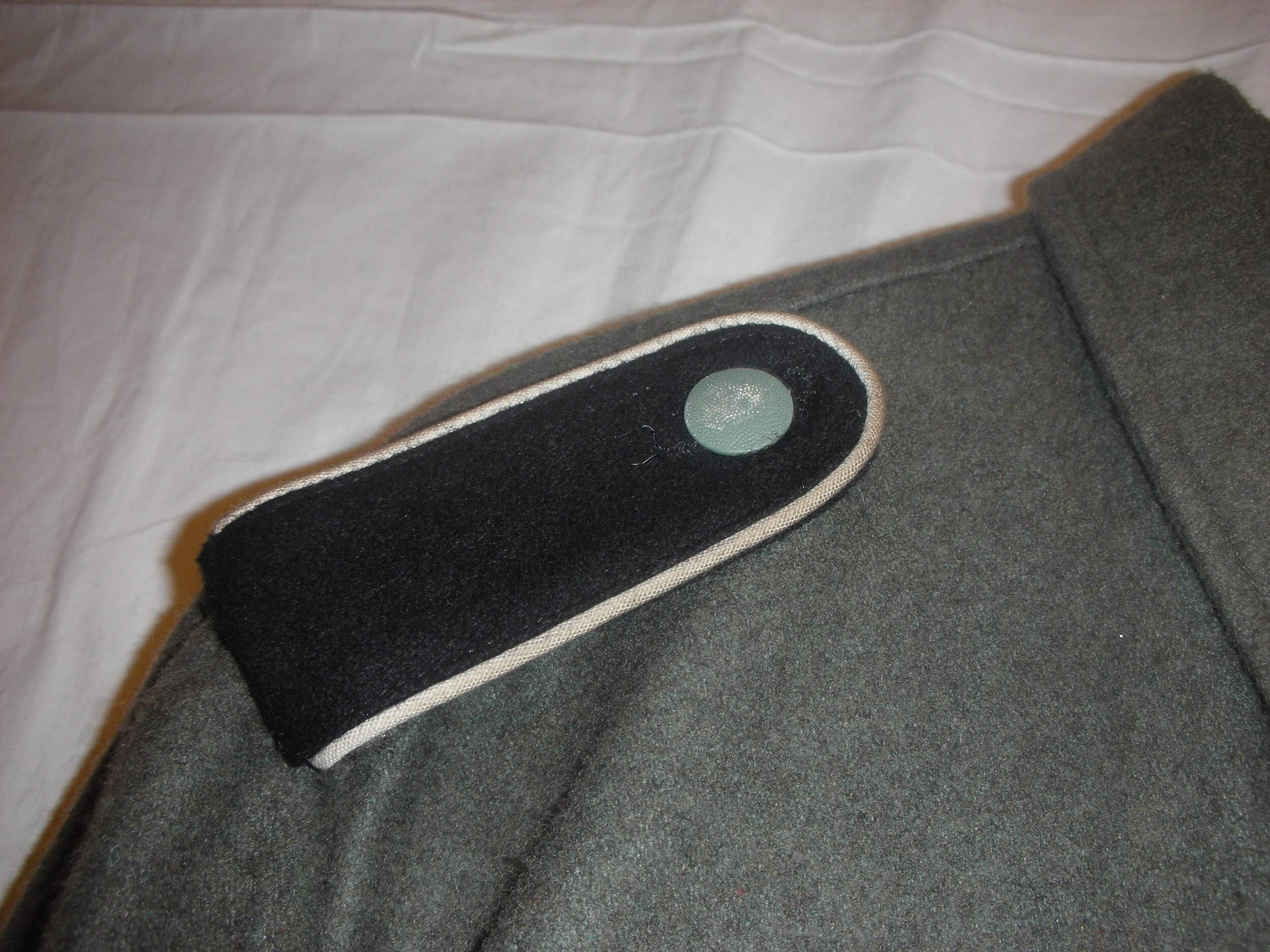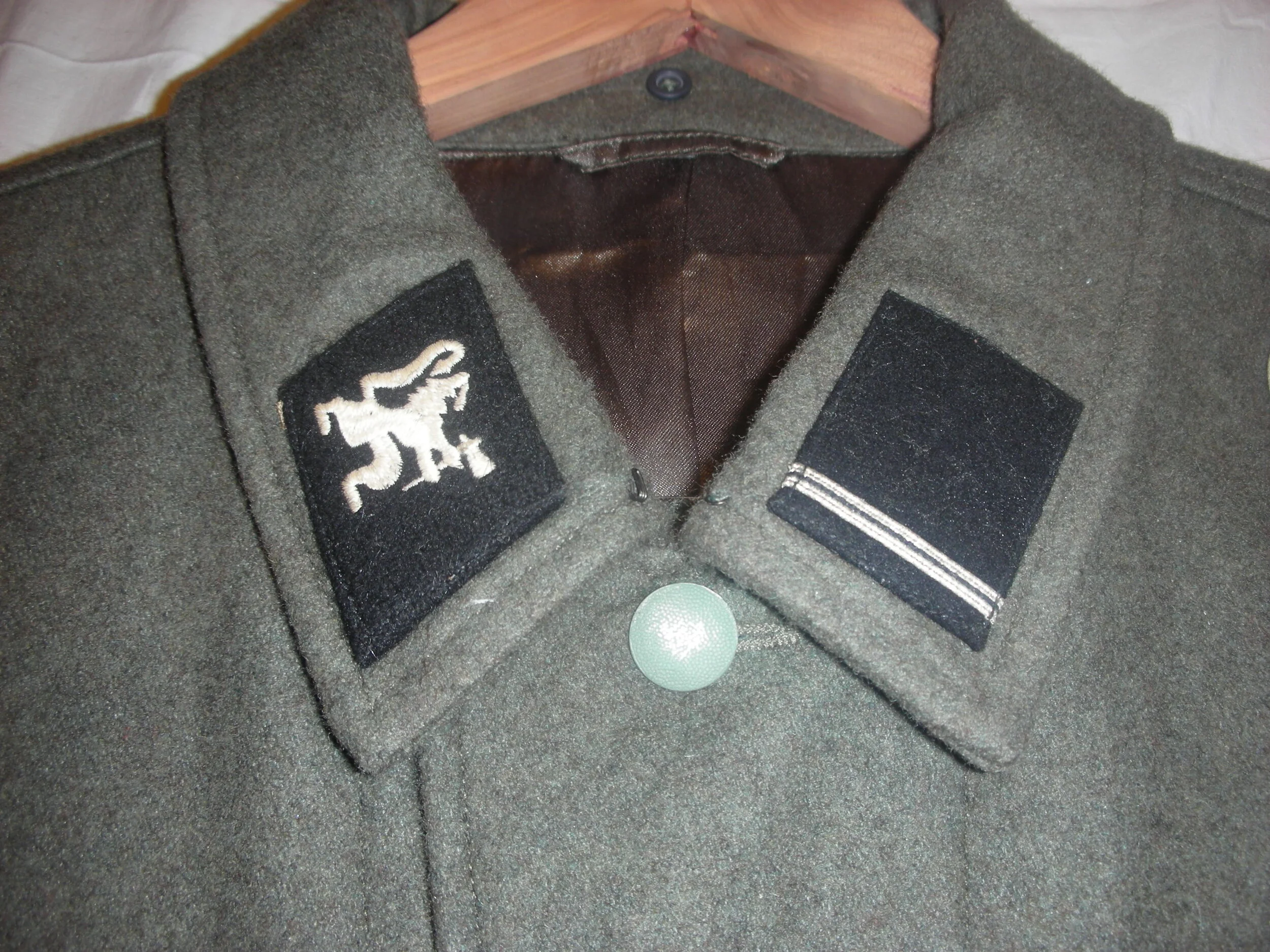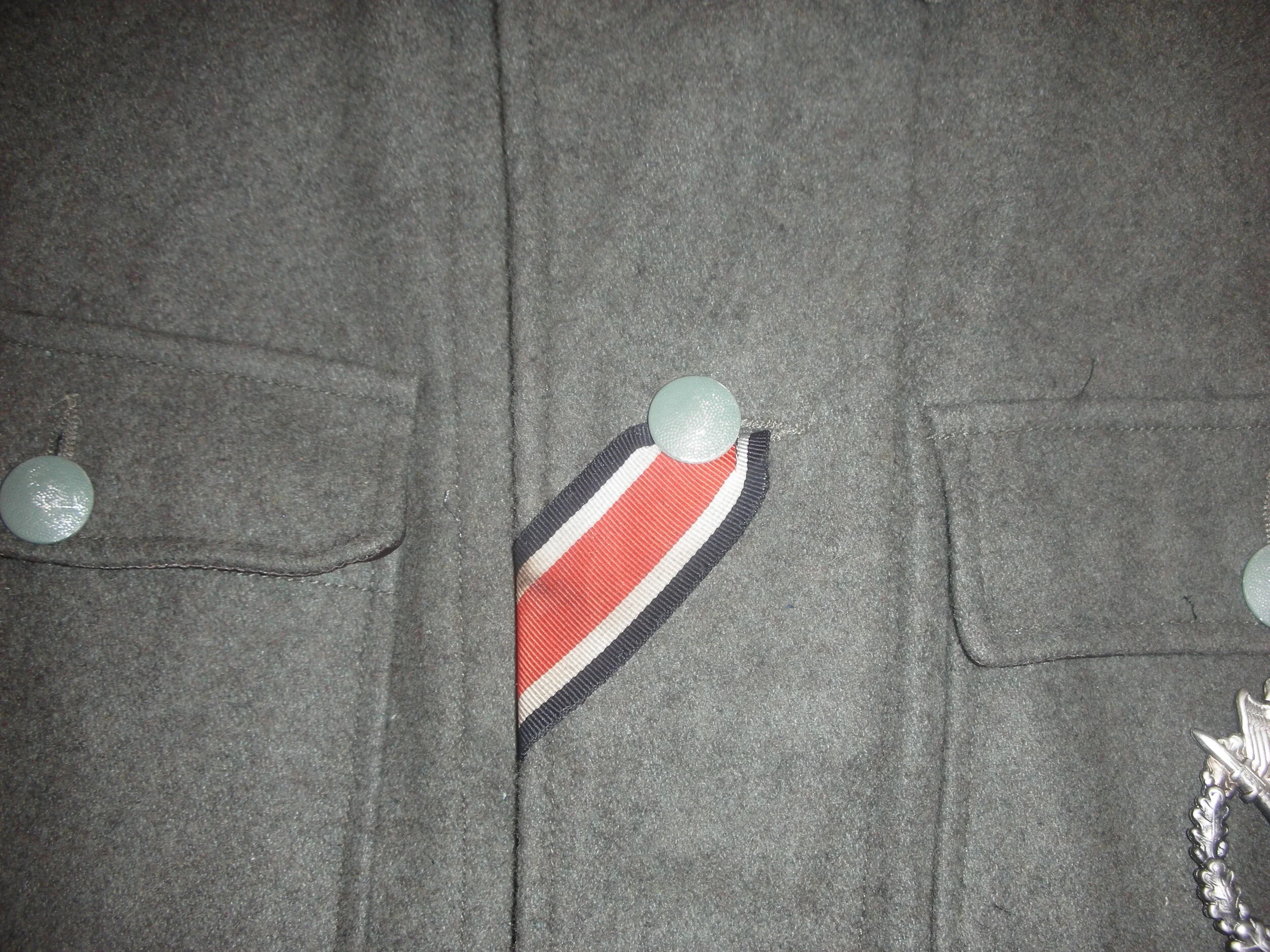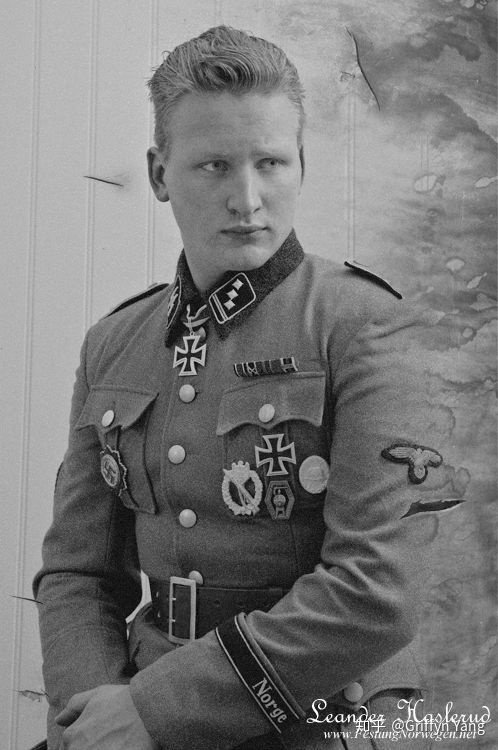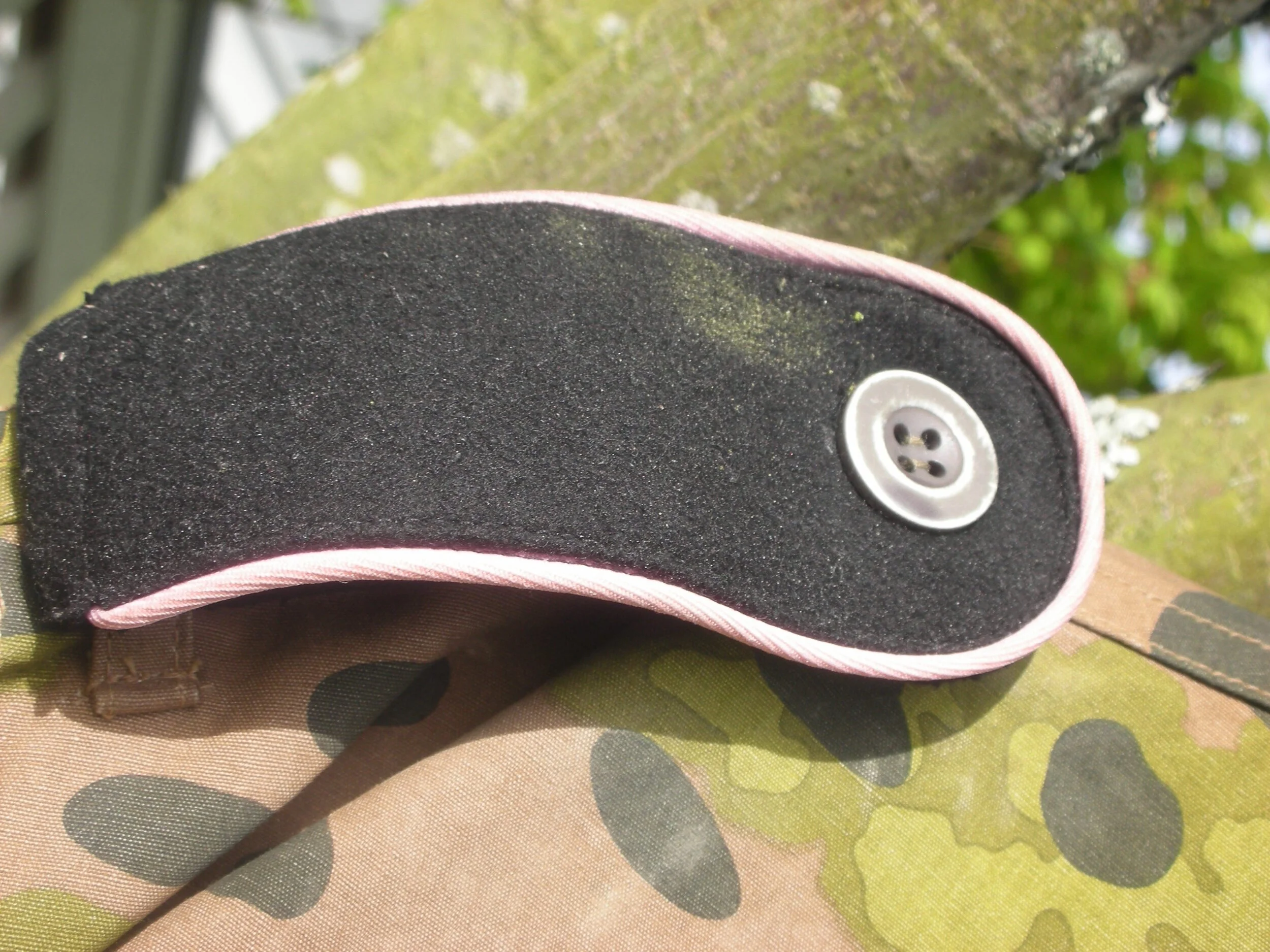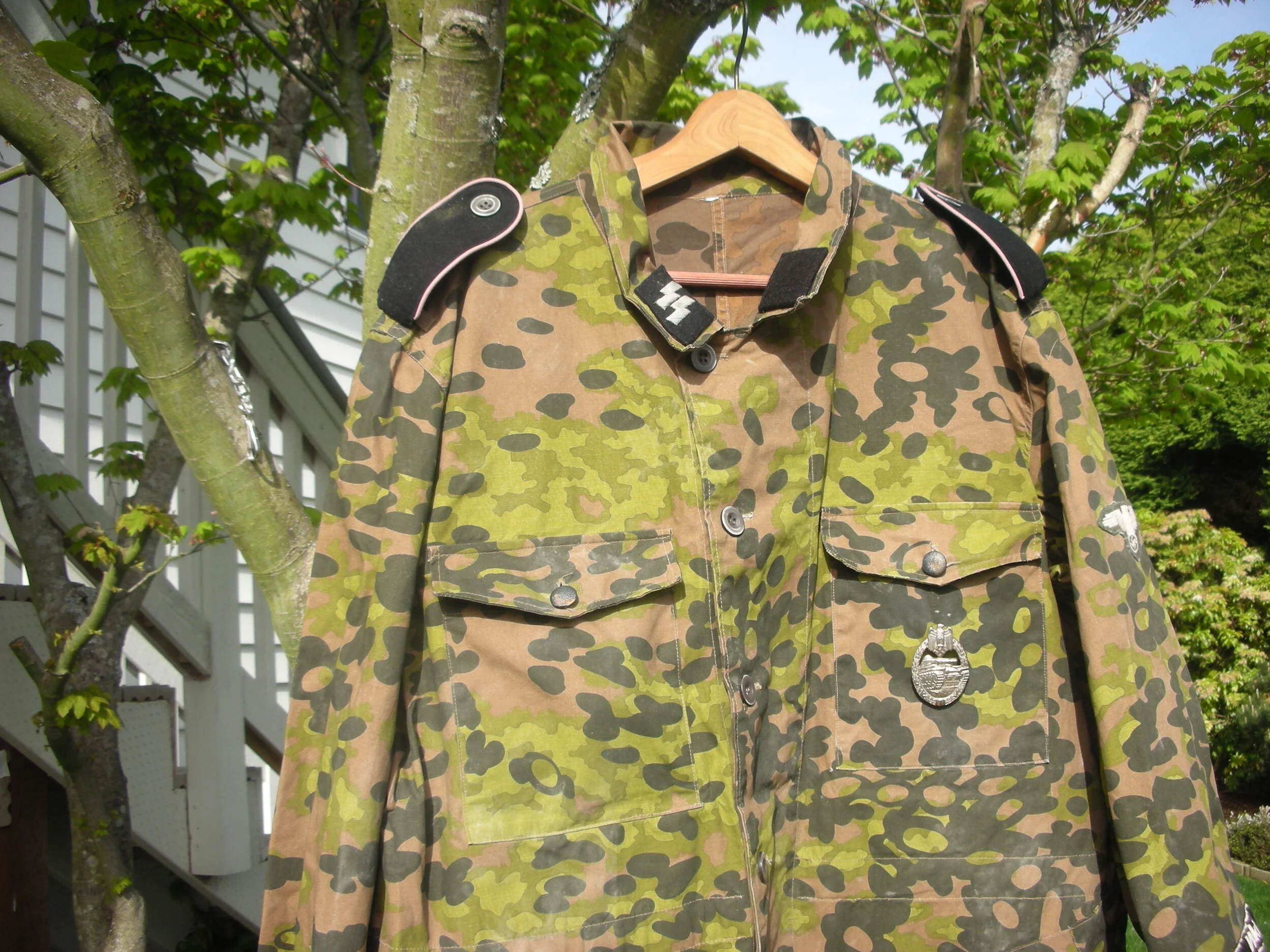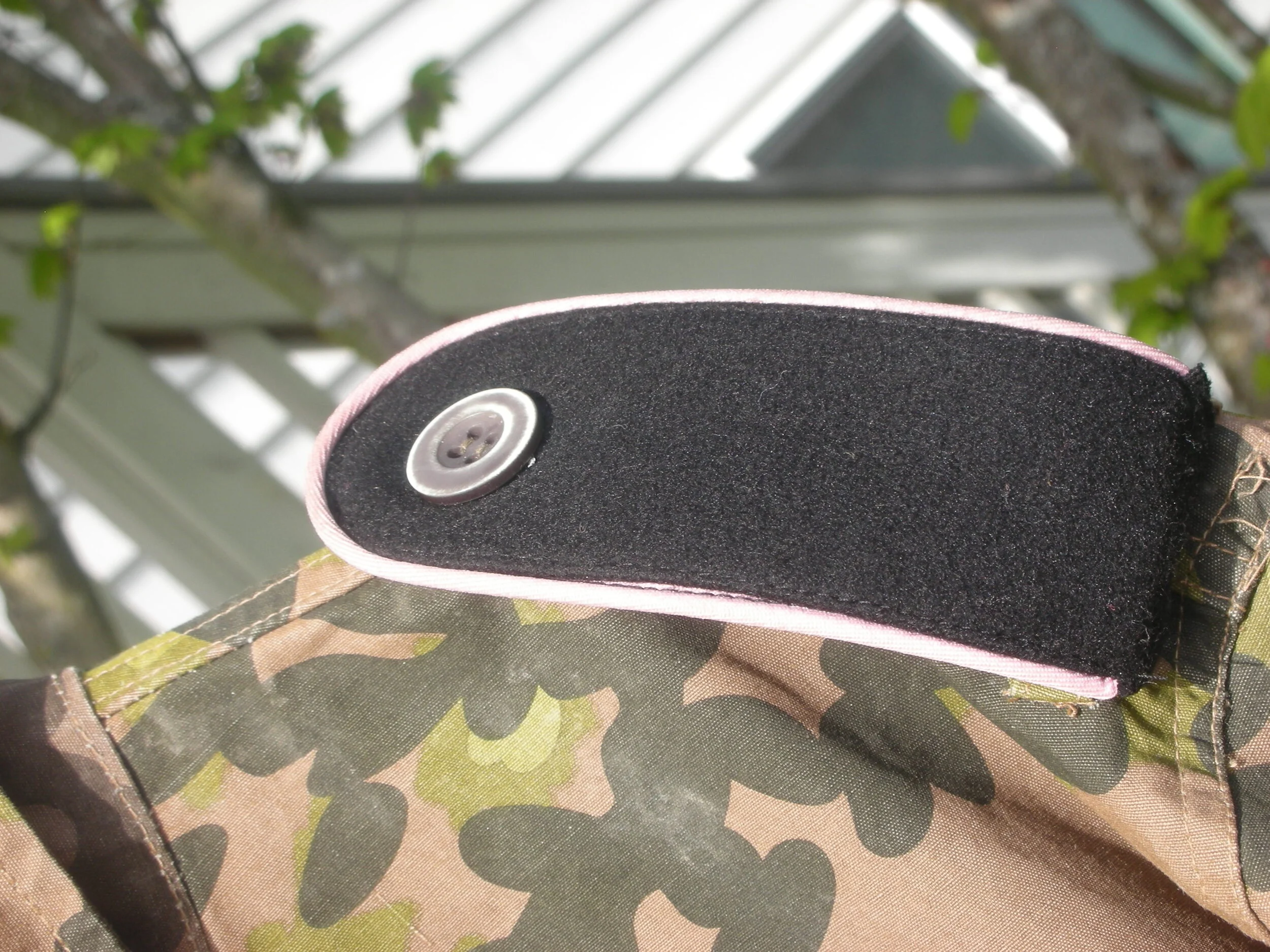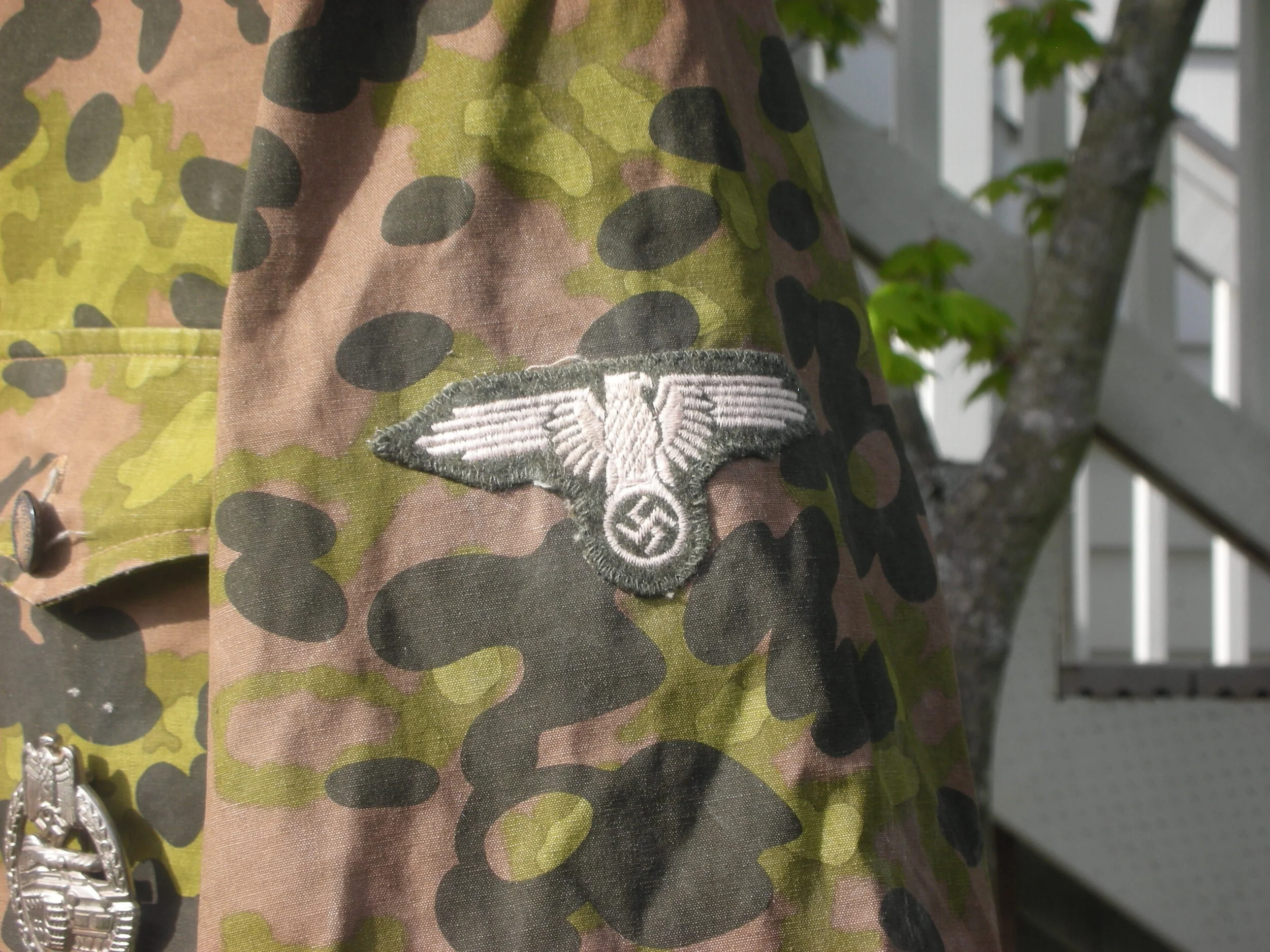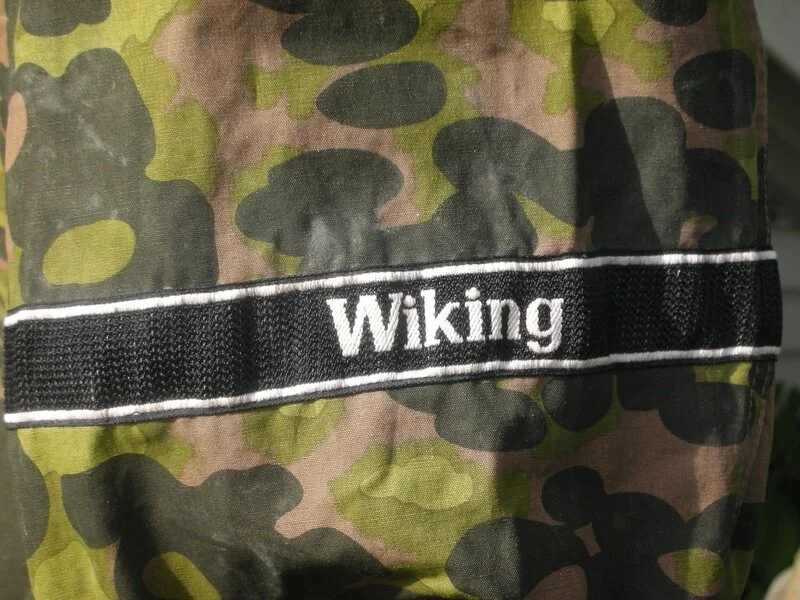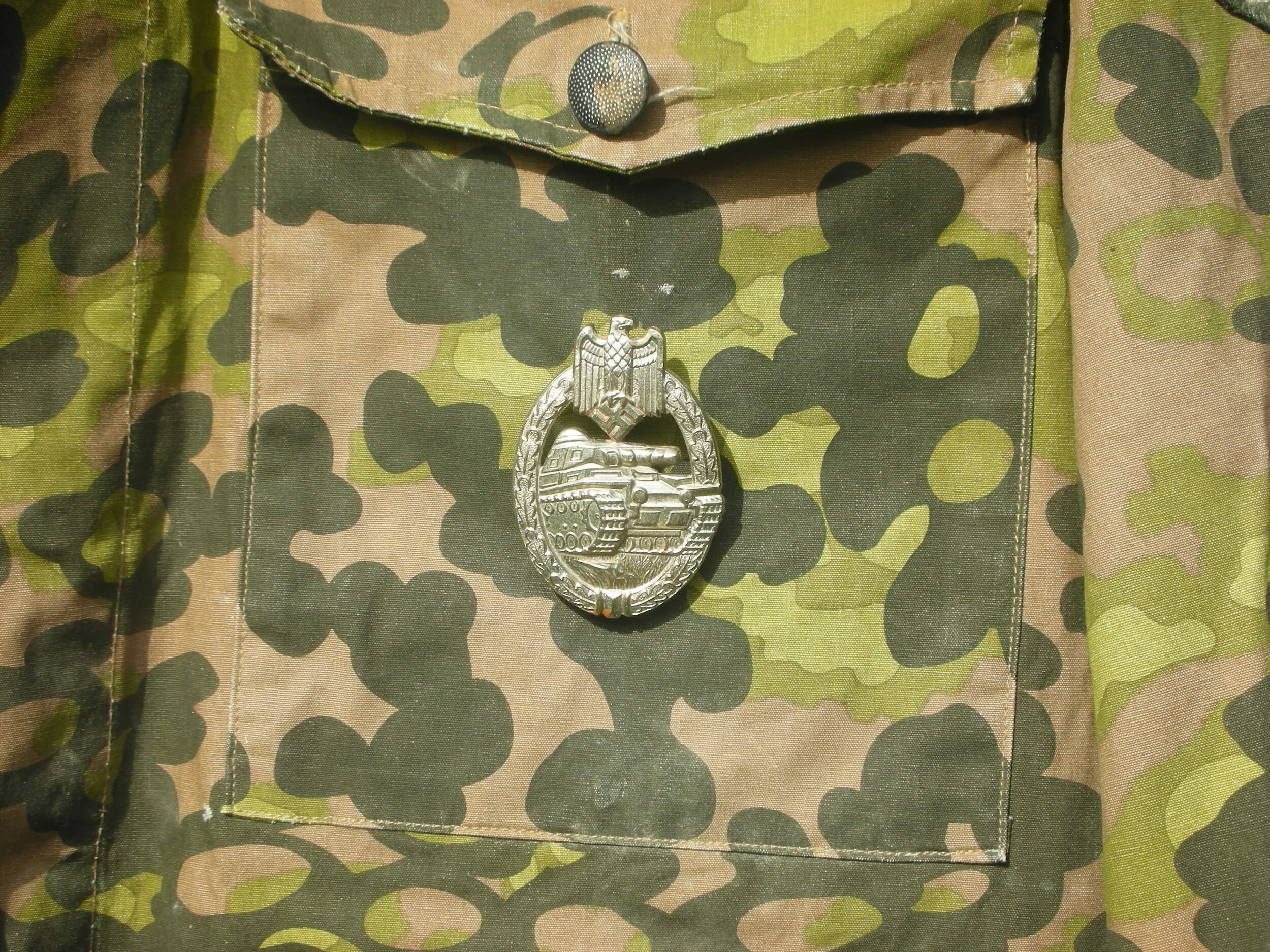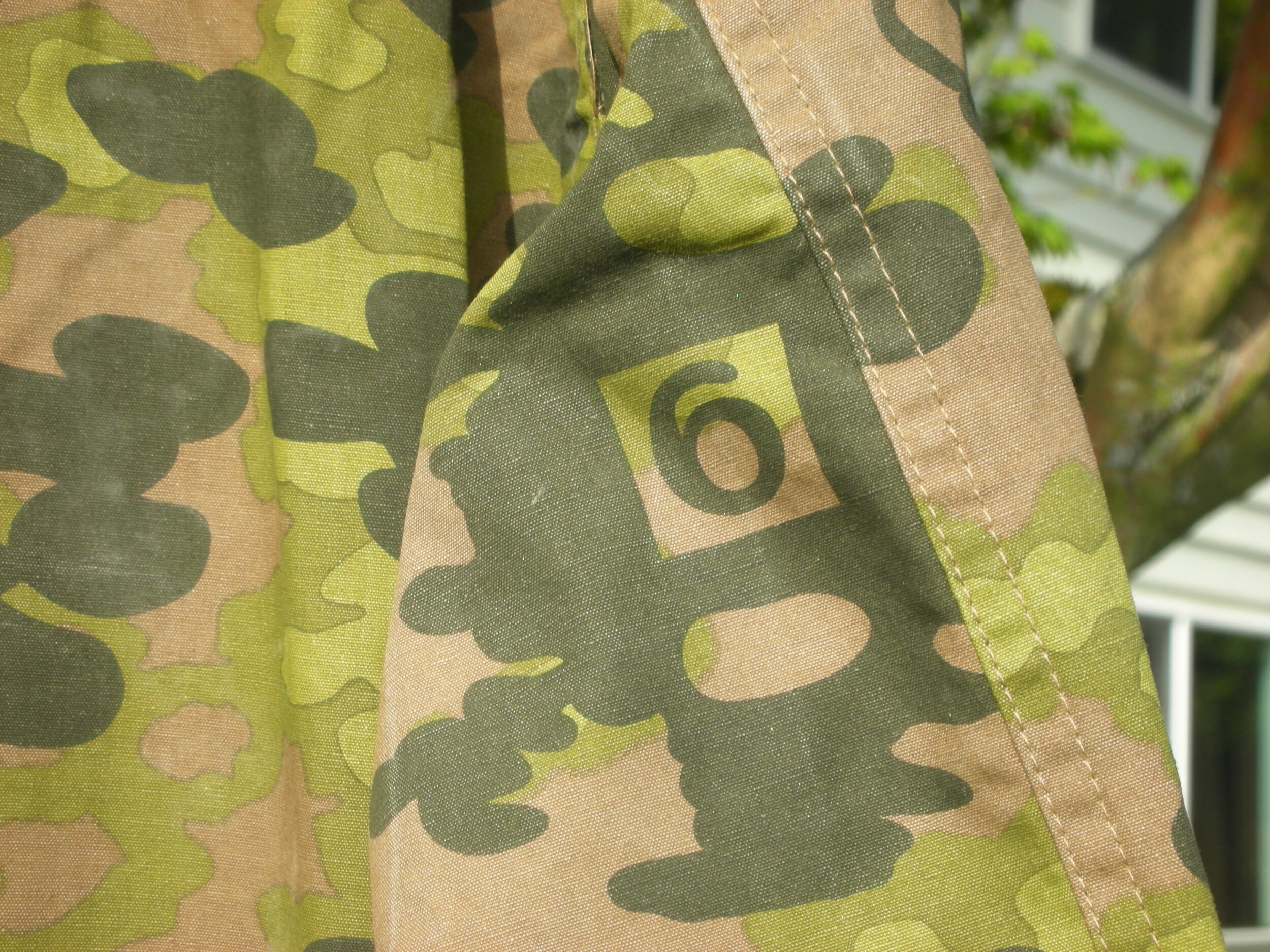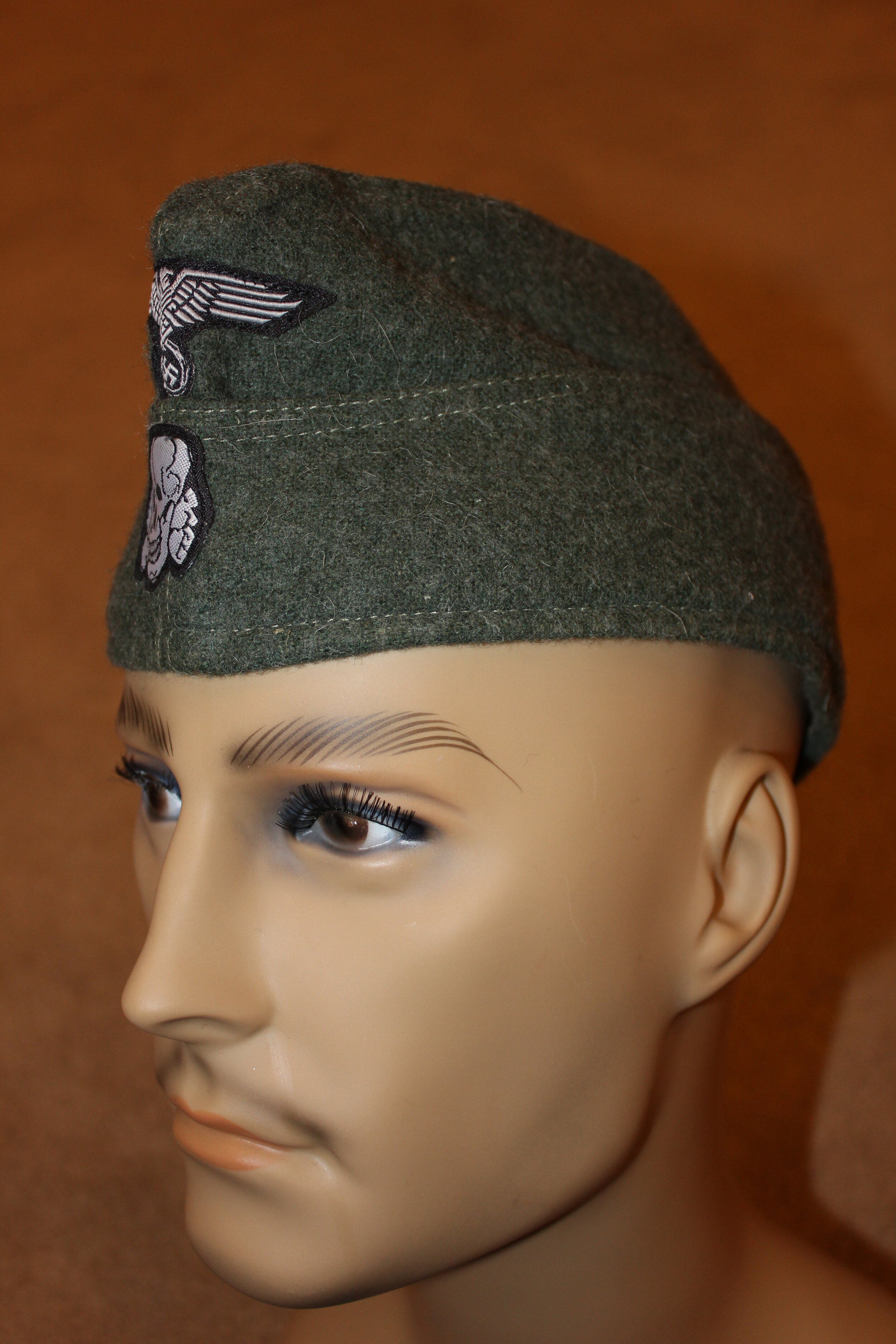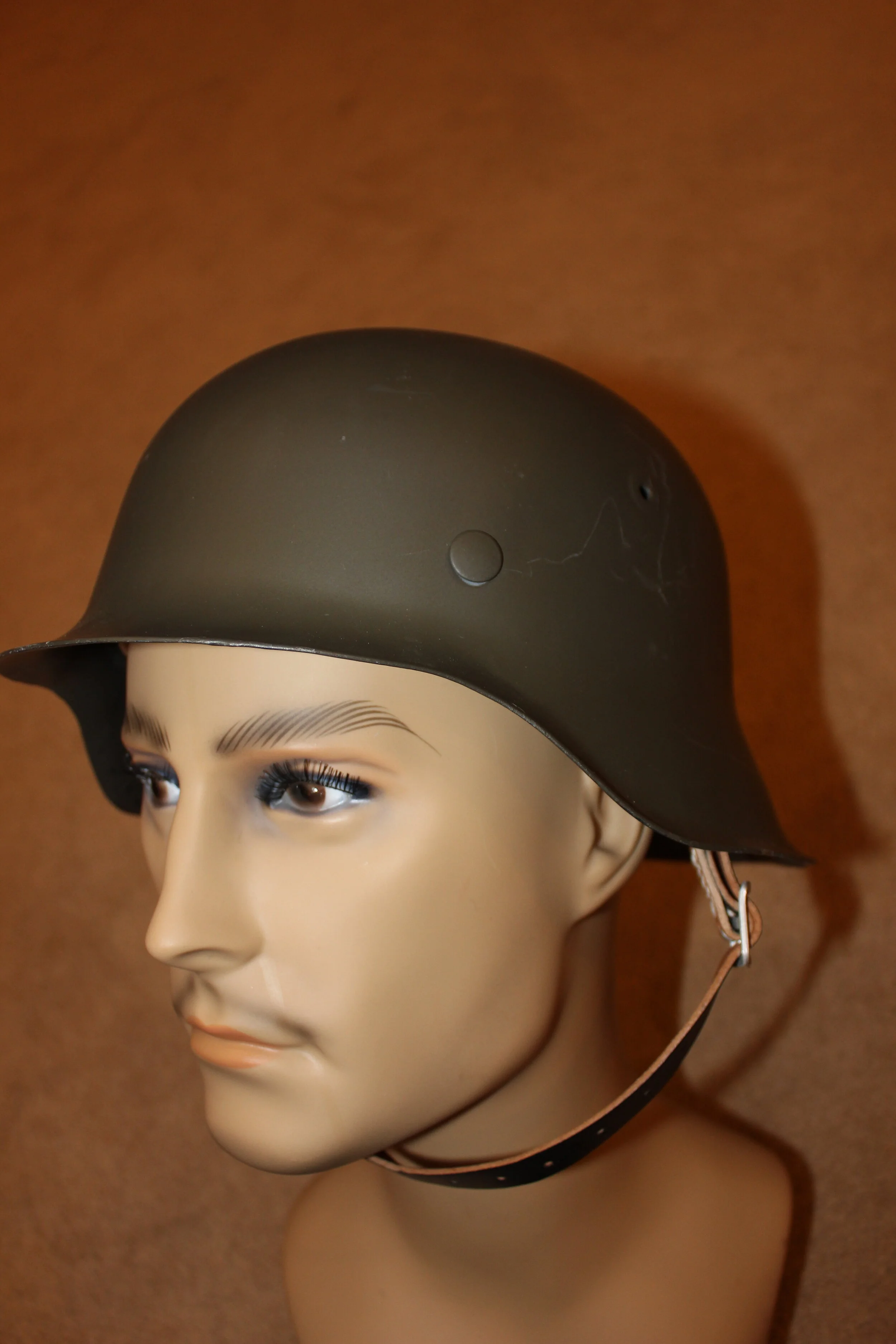Germanic SS-Volunteers:
SS-Schaarleider Germaansche SS Vlaanderen, SS-Opperstromleider, Germaansche SS Nederland:
This organization was raised in September of 1940 by Herman van Puymbroeck, Ward Hermans, and Rene Lagrou under the name Algemeene-SS Vlaanderen, with the primary purpose of recruiting Waffen SS soldiers. Probably due to his connections with the SD (Sicherheitsdienst), Lawer Rene Lagrou became the first leader. He started with a recruiting campaign for the Waffen-SS and organized the action against the Jewish community in Antwerp. In 1941, he joined the Waffen-SS, and for the time, he was succeeded by his antisemite friend SS-Hauptsturmführer Jef de Langhe.
The first role of the SS-Vlaanderen was to recruit members for the Waffen-SS. This happened, for example, at the SS-Ausbildungslager Sennheim and later at the SS-Schule Schoten. In 1941, this ideological education was also published in a monthly “SS-Schulungsbrief”. The SS-Vlaanderen also had his newspaper, “De SS-Man”. First published in December 1940, the editor of the newspaper was Ward Hermans, who was succeeded by Maurits van de Walle.
In 1942, the Vlaanderen-Korps/Flandern-Korps was raised; this was intended as a separate unit within the Germanische-SS. If you were older than 35 years of age and smaller than 1.70 m, you were incorporated into the Flandern-Korps. The largest part of the Germaansche-SS would later turn out to consist of these so-called FK-men and served next to the SS-men.
Like in other German-occupied Occupied Areas, the Germaansche SS established the Bl (Beschermde Leden), which was the Flemish version of the FM (Fördernde Mitglieder). The BL were supporting members of the Germaansche-SS, and many male and female members of the De Vlag became BL supporters. In September of 1942, there were about 4,200 BL supporters.
One year after his appointment to Standaarleider, Raf van Hulse exchanged Flanders for the Eastern Front, where he would serve as SS-Kriegsberichter. The SS-Vlaanderen was given into the hands of SS-Untersturmführer Jef Francois, who had just come back from the Eastern Front, where he served in the Freiwilligen-Legion Flandern. SS-Brigadeführer Jungclaus ordered Francois, who was the former leader of the DMO (Dinaso Militanten Orde), to reorganize the Germaansche SS with the same discipline as the DMO.
By the end of 1942, due to the little interest in the Germanische-SS in Vlaanderen, SS-Obergruppenführer Berger realized that this organization wasn’t going to make a big difference in Flanders, so he set all his attention in the direction of the DeVlag. Dr. Jef van de Wiele, the Landsleider der DeVlag, proclaimed that the Germaansche SS and the De Vlag fought the same struggle and shared the same ideology. And was even appointed to SS-Untersturmführer after attending the SS-Schule Schoten. On the 20th of April 1944, he was promoted to SS-Sturmbannführer and was the highest Flemish SS Official.
In November 1943, Dr. Jef van de Wiele ordered every leading member of the DeVlag to join the Germanische SS. In consultation with the last Standaardleider, SS-Untersturmführer Antoon van Dijck, he even made sure that every member of the Germaansche SS became a member of the DeVlag so that bolt organizations nearly molded together at the end of the war.
As a result of this relationship with the DeVlag, the status of the Germaansche SS changed from more political to more military one. The organization started being assigned to various guard assignments. This military status was so emphasized when in the Summer of 1943 the leadership of the Germaansche SS came into the hands of young Waffen-SS Officers who had just finished the SS-Junkerschule Bad Tölz.
After a dispute between SS-Obersturmführer Francios and the Dienstselle Jungclaus, the headstrong SS-Obersturmführer was sent to an outpost of the SS-Hauptamt in Germany to coordinate the Germaansche SS-Sturmbannen. Besides, Dr. Van de Wiele expressed his destructive criticism of Francois at a meeting with SS-Brigadeführer Jungclaus. On 9th November 1944, the 22-year-old SS-Untersturmführer Antoon van Dijck took over the command of the Germaansche SS in Vlaanderen. Van Dijck came from the SS-Junkerschule Tölz after having served as adjutant of Francois.
On 4 December 1942, SS-Untersturmführer August Schollen, the leader of Stormban III/I, was shot in Brussels, and his friend SS-Obersturmführer Rob Verbelen, the leader of Stormban IV/I reacted with revenge. This was the start of a bloody war between the Germaansche-SS and the Resistance Movement. Verbelen organized a group of SS men and staged a series of attacks on members of the resistance and distinguished people in the society. As the Stafleided der Vlag, in the Summer of 1944, Verbelen faced the De Vlag-Veiligheidskorps / De Vlag-Sicherheitskorps by combining the manpower of the De Vlag, together with the Germaansche SS. The plan was to form a unit to protect their supporters against the Allied invasion. But Verbelen had other plans, he saw the unit as an expedient to squash the armed resistance. The De Vlag-Veiligheidskorps worked closely together with the SiPo/SD (Sicherheitspolizei/Sicherheitsdienst) and were always present in their actions.
Due to the Allied advances of September 1944, many members of the Germaansche-SS fled to Germany. The Germaansche SS Nederland numbered 7,000, a political formation, that also served as a reservoir for the Waffen-SS.
Germaansche SS- Nederland, Standaard 3, Amsterdam:
The Nederlandsche SS (Dutch SS) was formed on September 11, 1940. On November 1, 1942, the name was changed to Germaansche SS in Nederland (Germanic SS in the Netherlands). The Nederlandsche SS, in total, counted for circa 7,000 members and was primarily a political formation. In addition, it served as a reservoir for the Waffen-SS. They were dressed in black uniforms that were based on those used by the German SS.
In the meeting on June 9, 1940, between A.A. Mussert and Gottlob Berger of the German SS-Amt, Mussert was ordered by Hitler to recruit Dutch Men for the Wiking division of the Waffen-SS. The volunteers would get their regiment, the Standarte Westland.
There were four reasons why the formation of the extension of Himmler’s SS in the Netherlands was important. First, the SS wished, as a result of Himmler’s desire for expansion, to take an important position in the conquered countries. Second, the SS thought it was of great importance for the recruitment of volunteers for the Waffen-SS. The Nederlandsche SS could not only serve as a pool of reserves but also had the important task of creating a foundation from which future recruitment could take place. Third, the Nederlandsche SS served to push Mussert in the desired direction of a Greater Germany. Finally, the formation of a Nederlandsche SS was a great propaganda value.
At first, Mussert refused to cooperate, but he had to make concessions to the German authorities to retain his position. Despite his failure to cooperate and even advising NSB members not to serve in the SS, the unit was still established. The Germans got fed up with his half-hearted attitude and threatened to advance Meinoud Rost van Tonningen to his position, forcing Mussert to agree with the formation of the Nederlandsche SS as a variant of the Allgemeine-SS.
On September 11, 1940, the Dutch SS was formed by Mussert, formally as Afdeling XI (Department XI) of the National-Socialistische Beweging (National Socialist Movement, the NSB), making Mussert the theoretical leader of the department. Henk Feldmeijer, a protege of Meinoud Rost van Tonningen, was appointed ‘Voorman’. In practice, Feldmeijer reported that Rauter and Heinrich Himmler completely bypassed Mussert and his NSB. Feldmeier sought more and more integration with the German Allgemeine-SS. A training school was opened for the Dutch SS at the Avegoor estate in Ellecom in the spring of 1941.
On 1 November 1942, the name was changed to Germaansche SS in Nederland (Germanic SS in the Netherlands). This change emphasized that it was the Greater German aspect rather than the Dutch that was the greater importance.
By the end of 1944, the Germaansche SS in Nederland only existed on paper, thanks to the changing tide against the Germans and their supporters as the war drew to a close.
As the Nederlandsche SS was supposed to be an elite corps, not everybody was allowed to become a member. There were selections based on race, attitude to life, personality, and physical condition. To become a member, the candidate (SS-Maat, a translation from the German SS-Anwarter) had to satisfy a thorough series of physical and genealogical examinations, and investigations were made on each applicant. Only after these were successfully concluded did the candidate officially become an SS-Mann.
The Nederlandsche SS was divided into regional districts called ‘Standards’. There was also a separate police ‘Standaard’. Then, five Standaarten (Plural) were in turn divided into groups (4 men), Troops (40 men + leader), Storms (123 men + Commander + Deputy), and three storm units (500 men + staff). This incorporation only existed on paper. In practice, the standards consisted of a few cadre storms. On average,e a standard had only 130 men. An important reason for this low number was the continuous flow of recruits to the Waffen-SS.
This SS-Obersturmführer wears a black uniform with the insignia of the ’Germaansche SS en Nederland’. He wears black polished riding boots and black breeches, with Schirmmutz with special (Z) Wolfsangle insignia, with an enlisted belt with cross strap and national buckle. He has already seen combat service in the Waffen-SS and has been awarded the Iron Cross II class, Infantry Assault Badge, and the Wound Badge in Black.
Schalburgmand (SS-Mann) Kanonkompagni Gruppe 1 Schalburg Korpset (Schalburgkorps):
The corps was divided into two groups: the first made up of regular soldiers and the second, which came to be known as the Danish People's Defense, of civilians, some of whom were expected to provide financial backing.
Members of the corps were used as a guard battalion to protect railroads and crossroads from sabotage. In July 1944, the Schalburgkorps was incorporated into the SS as the SS Training Battalion Schalburg. Six months later, it was renamed the SS Guard Battalion Zealand. It was officially disbanded on February 28, 1945. Gruppe 1 was made up of 3 Infanteriekompagni and the Kanonkompagni, which was the equivalent of the German Army Infanterie Geschutz Kompanie or light artillery company, containing about 50 soldiers.
The Schalburgkorps was a Danish volunteer army corps and a branch of the Germanic SS. It was named after Christian Frederik von Schalburg, commander of the Freikorps Denmark, who was killed in action in the Demyansk Pocket in 1942. The Danish Germanic-SS was formed on February 2, 1943. On March 30, the corps was renamed the Schalburgkorps. Members who had not had any Eastern Front combat experience had to go through a six-week political indoctrination and combat training.
Schalburgkors or Schalburg Cross was named after Christian Frederik von Schalburg, commander of the Frikorps Danmark, around 1943. The cross was manufactured by the Danish firm Heimbürger in Copenhagen. The cross was awarded to Schalburgkorps. members for recognition of service against the Danish resistance movement and those serving or killed in action on the Eastern Front.
The Schalburg Kreuz was intended to be worn on the left breast pocket of its recipient's uniform and was issued in two classes, one for officers and NCOs and the other for enlisted. Both crosses were die-struck and measured 50mm x 50mm. The enlisted grade cross was painted an off-white color with golden outer edges. The cross has a medallion in the center, which is soldered to the cross. The medallion has the golden inscription Troskab er Vor Ære or Our Honour is Loyalty, with golden oak leaves below.
In the inner ring is a white mobile swastika with opaque red paint in the background. The officer / NCO class cross was produced in the same colors but was made of enamel, with the cross being white. The red paint in the medallion was substituted by opaque red enamel, and the oak leaves are gilded.
SS-Landstorm Nederland:
The “SS-Landstorm Nederland” had been composed of volunteers of Dutch heredity and background, and though they were referred to as a Division, they were never really the size of more than a full Brigade. Himmler’s office had ordered on 12 March 1943, the formation of a Dutch SS-Volunteer Regiment. And the SS-Grenadier Regiment 1, Landwacht Niederlande was formed. Unlike the Nederland brigade, the Landwacht Niederlande was to be a territorial defense unit, so recruits did not have to fear service fighting against the Soviets or “Bulshiviks” on the Eastern Front! But it is believed some did, and soon enough, they were involved with the fight on the Western Front.
Surprisingly perhaps, “speaking of present feeling at this time (of 2023), many people did step up to the line, and volunteered to become recruits of the “Landstorm-Niederlande”. At the time, many were nearly starving, service in the regiment would mean a job, some money, and food, or be forced labor for the local munitions factories.
On 16 October 1943, the regiment's title was changed to SS-Grenadier-Regiment 1 Landstorm Nederland. The unit fought in various actions, mostly on the Western Front. They took part in fighting in Normandy, France, and when Allied” Operation Market Garden” came to Holland, in September of 1944, the unit, then under the command of Hans Rottger, had been combined with the Watchbataillon Nordwest and a regiment of the Ordnungspolizei; they became Kampfgruppe bearing his name.
They fought through the Netherlands and were involved in the Ardennes Offensive, then through Belgium, Luxembourg, Pomerania, and the Western Allied drive into Germany itself, and onto the Seelow Heights. In the latter action, Panzerjagerbrigade "Dora", was said to be equipped with 2 Jagdtigers, but both were destroyed attempting counterattacks, and the unit was decimated completely.
The M43 Style Feldgru Uniform is being used here. The SS Regiment was not officially a part of the SS, therefore, the SS runes are not present on the volunteer uniforms, and a more traditional “Grenade” is used to represent the Landwacht units. As for the rest of the uniform, all “SS” insignia are present, with Black centers to the white piped shoulder boards, and black-trapezoid collar tabs. He is a Squad leader with the rank of SS-Scharführer.
SS-Mann, SS-Freiwilligen Legion ,,Niederlande’’:
Waffen-SS expansion with foreign volunteers for the "crusade against Bolshevism" began in April 1940 with the creation of SS-Regiment “Nordland” (Danish, Norwegian, and Swedish Freiwilligen) and SS Regiment “Westland” ( Dutch and Flemish Freiwilligen). Recruitment in the Netherlands was led by the Dutch Army General Staff officer Lieutenant-General Hendrik Seyffardt. In April 1941, volunteers began arriving in Hamburg, and by July 1941, they were organized into SS Freiwilligen-Verband “Niederlande”. The size of a reinforced Infanterie Bataillon, with five Motorized Kompanie, the unit was redesignated as SS-Freiwilligen Legion ”Niederlande”.
General Seyffardt was appointed to command, and in November 1941, the Legion was ordered to the front near Leningrad, under the rear area command of Armee Gruppe Nord. The Legion arrived at the Volkhov River in mid-January 1942 and was engaged in rear security activities. In late June, it was transferred north in support of units at the Siege of Leningrad.
The unit was then to take part in an offensive, Operation Nordlicht, which was ultimately called off to deal with the Soviet Sinyavino Offensive. The Legion was then moved south near Lake Ladoga. At the end of 1942, it was merged with the 2. SS Infanterie Brigade. In April 1943, the Legion returned to Germany to be reformed as the SS-Freiwilligen-Panzergrenadier Brigade “Nederland”.
The uniform is complete with the Frw. Legion “Neiderlande” Ärmelstreifen and diagonal national Schild. The rest of it is right from the Waffen-SS regulations book. Rather than an actual volunteer, or taken from his home like most of the young, and of soldier age, where they were reeducated, and given an offer we’ll never know, but it is clear it was not always completely voluntary, he has become a German-SS-soldier and sent far from home. And, well, he does not hold the rank that maybe a full-blooded German may have had the same decorations for leadership, with the Iron Cross I and II classes. He has also been wounded in combat, The uniform may depict the time of operation with the Armee Group Nord. After being re-formed, they went back to fighting in the Russian Campaign, during the most trying of times for them from full-advance, to completely stopped and then retreat, and complete decimation.
*Decorated, SS-Hauptscharführer, 4th SS Volunteer Panzergrenadier Brigade Netherlands:
I had lost the information I had on this fellow, and never did have his name, so thanks “Grant” for helping update this uniform, This Guy is Dutch SS-volunteer, Gerardus Mooyman, the first foreign volunteer to win the Knights Cross - a 19-year-old, PAK (7.5 cm Pak 97/38) gunner at Leningrad!
He was born on the 23rd of September 1923 in Apeldoorn, in the Netherlands. I grew up in a very pro-German family. His father had been a small-time retailer, but the business suffered greatly during the great depression, and so this led to him joining the NSB so as not to burden the family and get on his own. He had spent his youth hearing stories about the triumphs of Hitler and national socialism in Germany and was impressed with the German victories across Europe.
His father hoped he’d change his mind and would stay in the family business, but he preferred a military career, so in 1941, he volunteered to serve in the 4th SS Volunteer Panzergrenadier Brigade Netherlands, and he was numbered SS-2351. By the end of the conflict, he had risen to the rank of Untersturmführer or 'Junior storm leader' (equal to 2nd Leutnant).
He was arrested at Bodegraven in March 1946, put on trial in 1947, and charged with active military collaboration for his service in the Waffen-SS. He was sentenced to 6 years in prison, serving 3 years. The uniform depicted here is a Custom M44 Jacket that he had custom-made. He is said to have mentioned that he had made a big mistake and had no idea what he was getting involved in with the Germans Waffen-SS.
Mooyman was disillusioned with the National Socialist program when he learned about the Holocaust and the many war crimes perpetrated by the National Socialists, the SS, and Germany. Gerardus Mooyman died in a car accident near Anlo on 21 June 1987, at age 63.
*Note my uniform has the collar tabs on it. As more photos are found, they do not show, so I may remove them.
SS-Untersturmführer, Olaf Westra, Freiwillege Legion Niederlande:
After the invasion of Poland in 1939, Himmler sought to expand the Waffen-SS with foreign volunteers for the "crusade against Bolshevism". The enrollment began in April 1940 with the creation of two regiments: the Waffen-SS Regiment Nordland (for Danish, Norwegian, and Swedish volunteers), and the Waffen-SS Regiment Westland (for Dutch and Flemish volunteers).
The recruitment drive in the Netherlands was given an air of respectability by the support of Dutch General Staff Officer Lieutenant-General Hendrik Seyffardt. By July 1941, the Dutch have organized into a formation the size of a reinforced Infanterie Bataillon, with five Kompanie (mot.). designated as SS-Friewillege Legion “Niederlande ”, General Seyffardt was appointed commander. In November 1941, the legion was ordered to the front near Leningrad, under the overall command of Heeres Gruppe Nord.
The Legion arrived at the Volkhov River in mid-January 1942 and was engaged in rear security activities. In late June, it was transferred north in support of units at the Siege of Leningrad. The unit was then to take part in an offensive, Operation Nordlicht, which was ultimately called off to deal with the Soviet Sinyavino Offensive. The Legion was then moved south near Lake Ladoga. On 6 February, General Seyffardt, while campaigning for recruits in Amsterdam, was assassinated by the Dutch resistance. In April 1943, the unit was sent to Germany to be reformed as the SS-Freiwillige Panzergrenadier Brigade “Nederland”.
Mussert Cross The Nationaal-Socialistische Beweging or the Dutch Nazi Party "NSB" under the leadership of Anton Mussert instituted a special Bravery and Merit award for NSB members in German Service. This award, commonly known as the Mussert Cross, comes in two classes: with swords for combatants and without swords for non-combatants. The cross is made of three parts: enamel and high-quality gilt-finished metal. The outside edge of the cross is in black enamel on both sides, with the inner portion finished in translucent red. A separate white disc is soldered to the front and back of the cross. The front side shows a gilt wolf hook rune over a swastika with oak leaves. The backside shows around the top edge of the circle the motto of the NSB in gilt Hou En Trou (Steady and True) and oak leaves on the bottom edge. The center of the disc has the name MUSSERT and the date 1941. The ribbon shows the Dutch national colors. From left to right, the ribbon colors are sky blue, white with a thin orange strip to the center, white, and sky blue. The award came in a two-piece maroon outer card case. The award was never authorized by Hitler to be worn on German uniforms. It has been added to Westra’s Blouse in the memorial.
*SS-Unterscharführer, 3./66. SS-Freiwilligen-Panzer Grenadier-Regiment 27. SS-Freiwilligen-Panzer Grenadier–Division ,,Langemark:
In July 1941, the number of volunteer recruits from northwestern Europe reached the point that national units could be formed. Flemish volunteers were organized into the SS-Freiwilligen Verband Flandern. As more volunteers, including members of the VNV (Flemish Nationalist Front), joined the unit continued to expand. By September, it was a reinforced Infanterie Bataillon, with five fully motorized Kompanie, and was re-designated as SS-Freiwilligen-Legion Flandern.
The legion was 1,100 men strong. 1,000 were Flemings, including 14 officers. On 31 May 1943, the legion reformed as SS-Freiwilligen-Sturmbrigade “Langemarck”. The title “Langemarck” was given in memory of the bloody battle fought at Langemarck, Belgium, in 1914. Intended to represent Flemish-German camaraderie, the Flemings didn't like or understand why they had been given a title that represented the losses suffered by German soldiers trying to take over their country in 1914. This created jealousy as their French-speaking countrymen, the Walloons, were granted the title of their home region for 5. SS-Freiwillgen Sturmbrigade “Wallonien”.
Despite this, large numbers of Flemings continued to sign up for service with the Waffen SS. In addition to the veterans of Legion Flandern, the Sturmbrigade now gained a contingent of new Flemish volunteers, a Panzerjäger Kompanie, a Sturmgeschutz Bataillon, and a FlaK Bataillon. In October 1943, the brigade was renamed 6. SS-Freiwillgen Sturmbrigade “Langemarck”. In Dezember 1943, “Langemarck” was ready for combat with a unit strength of 2,022 men. By late September 1944, most of Belgium was under Allied Control. This created a flood of pro-German refugees and new volunteers.
On 30 October 1944,” Langemark” was ordered to Lüneburg-Heide, where the new draft of volunteers, along with Flemish Luftwaffe, Kriegsmarine, NSKK, and Organisation Todt personnel, were trained and organized into 27. SS-Freiwilligen-Panzer-Grenadier-Regiment totaling 15,000 men. Declared battle-ready on 1. In January 1945, the division was again attached to III. (Germanic) SS Panzer-Korps, now a part of Steiner's newly formed XI. SS Panzer-Armee was located on the lower Oder near Stettin. On 16 February, the division was ordered on the offensive as a part of Operation Sonnen Wende, the operation to destroy a Soviet salient and to relieve the troops besieged in the town of Arnswalde. Despite initial gains, the attack soon bogged down and under Red Army pressure, Korp’s elements as well as “Nordland”, “Langemarck”, and “Wallonie” began a fighting withdrawal. “Langemark”, reduced to a Kampfgruppe, fought its final battle near Mecklenburg, where it surrendered on 8 May 1945.
The SS-Unterscharführer wears the Heeres Dienstanzug Model 1936 with the final regulation application of insignia, which includes the special three-armed sun-wheel collar Litzen and the last pattern Ärmelschild. His Einheitsfeldmütze has the aluminum “Schirmmütze Insignia” applied to the standard embroidered or BEVO type, perhaps for leadership purposes. He is identified as a volunteer by the Belgian/Flanders Lion, advancing on a Yellow Shield. Also noticed that he has the rare, and very popular with the troops, the “Tollenaere Kenteken Badge, this one is in Bronze”, It was a prestigious award, it was issued to commemorate the death of the VNV Black Brigades Leader Dr. Reimond Tollenaere who had been killed in action at Kopzy, near Leningrad on 22 Jan. 1942. This also identifies him as one of the VNV Black Brigade members. The Badge had been misplaced or lost at some point and had been missing from the uniform for a long time. I finally found another one, bought it on the spot, and now hung it from the loops again. I guess the SS-National Eagle was allowed to be changed to a Flemish Version of it and was used in the end.
Also of Note, he has also earned the Combat Clasp in Silver for a lot of hand-to-hand fighting, the Infanries version of the Assault Badge, and the Wound Badge in Silver for 4-5 different wounds. Naturally, then he has done a lot of leading men in battle and has the Iron Crosses 1st and 2nd classes, and last but not least, in the ribbon hole is also the Russian Winter Award for that first dreadful winter in the battle for Russia. The uniform, like many in the collection, has the medical dressing in the inner front flap pocket as well; however, however-he seems to draw fire and may want more! But he has had to use many of them, so this isn’t his first uniform, either.
*I need to get some better pictures of this uniform.
SS-Sturmmann “Finnisches Freiwilligen-Bataillon der Waffen-SS” SS-Division 5 ,,Wiking”:
The Finnish Government recruited men for service with the Waffen-SS for a two-year term in early 1941. This delayed their arrival until May. The roughly 400 men who had military experience in the Winter War were sent to the SS-Division Wiking in the middle of June, where they were dispersed throughout the formation.
The inexperienced volunteers were held back for training and were formed into the SS-Freiwilligen-Bataillon Nordost (mot.) on 1 June. By the end of the month, the battalion had about 1,000 men. It was renamed the SS-Freiwilligen-Bataillon der Waffen-SS on 13 September, and additional volunteers arrived over the next several months to bring its strength up to around 1,180 men.
The unit was sent to the front at the beginning of January 1942, where it was attached to the SS-Regiment “Nordland” of the SS Division “Wiking”, serving as its third battalion. The Battalion participated in the Battle of the Caucasus in mid-1942 and the subsequent Third Battle of Kharkov in early 1943, after the German defeat during the Battle of Stalingrad in late 1942 forced the Germans to evacuate the Caucasus. 1408 men served in the Bataillon during its existence. The unit lost 255 men killed in action, 686 wounded, and 14 missing during its service.
The SS-Sturmann wears an SS-produced Model 41 Bluse, which is identified by the scalloped flapped unpleated pockets and two, not three, belt support hook holes in the body. A veteran of the first winter of Operation Barbarossa, he wears the Ost Front Campaign ribbon and the Infanterie Sturmabzeichen in Bronze.
SS-Scharfuhrer, 11. SS Panzer Artillery, 11. / SS Panzer Grenadier Division “Nordland”:
Formed in 1943 from the merger of three Germanic Legions-Nederlanden, Danemark, and Norwegen, plus the "Nordland" Regiment from the 5, SS Panzer Division "Wiking". Fighting in several Ost Front battles, "Nordland" was finally destroyed in Berlin.
The SS-Scharführer wears a standard SS cut feldgrau armored uniform with "N" ciphered shoulder boards and "Nordland" cuff title. A veteran of several actions, this NCO's experience is shown by his awards. He has been in over fifty combat actions on fifty different days, winning the General Assault Badge. He has also been awarded the Iron Cross 1st and 2nd Class for combat leadership as well as the Silver Wound Badge. He wears an M43 cap, which has become the cap of choice for soldiers, and standard feldgrau armored uniform trousers.
Memormeila of A “Quisling” / SS-Volunteer:
I don’t even want to tread here, as I have Norwegian in my blood, My father was born in America to Norwegian Parents and has a long history in farming, fishing, and, working at sea, anyways they left Norge 3 days before the invasion, coming back to the USA, via a ride on a merchant marine vessel, and the term “Quisling” well it’s not even mentioned anymore, but I recall my Grandparents were not to fond of them, and I’ll leave it at that.
I know they were put into places of control, leadership, police-type groups, educational operations, some for their behalf to get a leg-up on the political ladder, but I understand the temptation, but not at the cost of your people, your neighbors, and townsfolk, and there was a lot of bitterness, and other would be hell to pay after the war.
SS-Stormmann Germaske SS Norge:
“Germanske SS Norge” was intended to become an elite corps in Norway. It was founded on the 21st of July 1942, and all the men from ”Norge SS” were automatically transferred to the new unit. The thought was that they would follow in the footsteps of the “Norge SS” program. Use the same goals, ie, a Greater Germanic Empire with Adolf Hitler as the leader of the ‘Nordic’ Germanic peoples.
To become a member one had to fill several physical and certain racial traits, had to be of good personal character, and of course a clean criminal record, along with being a member already of the “NS” or having served with the Waffen-SS, or Norsk Legion / Frewiligen Legion for at least a year. After being admitted, the men were sent to Kongsvinger fortress for a four-week course in political ideology. They were also issued their Allgemeine-SS uniforms, but their collar tabs held the Sunwheel insignia rather than the SS-Runes, and the “GSSN Raven” on the left arm instead of the German Eagle.
The Leder of the school was SS-Obersturmfuhrer Beyermann. The Norwegian staff leader for “Germanske SS Norge” (GSSN) from August 1942 until April 1943 was Hauptsturmführer Olaf Lindvig. “Germanske-SS Norge” was first seen marching through the city streets in the fall of 1942, and many of them were former fighters of the Eastern Front. By the spring of 1943, the organization had around 700 members. In the fall of 1943, the members were asked to volunteer for front-line duty at the 23rd. Regiment “Norge”, but few did so. “Germanske SS Norge” was not a secret organization but had contact with and did services for the Sicherheitspolizei (SIPO) and the Sicherheitsdienst (SD).
In 1944, they numbered around 1200, and their leader was now Jonas Lie. The Intention was that the organization would seize key positions in Norwegian society the day the Germans handed over control to Quisling and the “NS”. But the relationship between them and the strongly national-minded “Hird” was not good, because many of the latter thought “Germanske SS Norge” was too German-minded and betrayers of their country. Some also feared that the German influence in Norway would become too strong through them. A common way to compare them has been the “Hird” was similar to the German “SA” and that the “Germanske SS Norge” was more like the Allgemeine-SS.
This SS-Stormmann (or Sturmmann) wears the black uniform with the insignia of the “Germanske SS Norge”. It should be noted that period photos and some in collections show the standard SS tunic with inset lower pockets being used. He has been awarded the prestigious Germanic Proficiency Badge in Silver. He wore black mountain boots and possibly gloves. He has the Black M43 cap, with a black officer’s belt with a cross strap.
I imagine that after the war, there was a lot more finger-pointing, but not at who may be with the underground, but rather who had been affiliated with the Quisling! And the repercussions were swift, brutal, and now probably forgotten.
SS-Sturmann, Freiwilligen Legion Norwegian:
As the Red Army was about to lose to the Northern areas of Norway and finding the European German occupation significantly less repugnant than the Eastern communists, many Norwegians took up arms to fight as Volunteers, the only nation that they saw had a chance at defeating the Soviets.
The Legionnaire’s uniform went through many insignia changes, this being one of the final variations, having the national collar insignia applied to it. The Legion’s cuff title is also on his left sleeve of the M43 style ‘Wartime’ production tunic.
This SS-Sturmann has won the Tron Cross 2nd Class, the Infantry Assault Badge in Silver, and has been wounded at least once. He wears a standard wool M43 cap with SS insignia on it.
SS-Obersturmführer, Norsk Volunteer Officer (Example # 1):
Ritterkreuzträger SS-Obersturmführer, 23. SS-Panzergrenadier-Regiment "Norge" 1943.
23. Regiment "Norge" was formed in early 1943. Many volunteered from ”Den Norske Legion” (DNL) /Frw: Legion Norwegen, and about 700 Norwegian volunteers were in military training at this time. Additionally, a company from ”Germanske SS Norge”, led by Hauptsturmführer Olaf T Lindvig, the acting staff chief of GSSN, and a Pionier-Kompanie led by Reidar Hoel were added to the regiment.
The men received excellent and tough training, and being in this high-quality regiment suited everyone who wanted to build a professional career as a soldier or officer. At first, the regiment was in the Balkans, mostly in Croatia, and participated in guard duties and anti-partisan warfare. In December 1943, the regiment, minus its tank battalion, was sent to Oranienbaum near Leningrad to lay siege to Russian forces remaining there. During the USSR's winter offensive in Jan 44, “Norge” had to fight their way back to Narva in the Baltic, and the Norwegians suffered great losses. Holding the “Panther-Stellung,” they fought in the famous battles of the Courland Pocket. In February 1945, the regiment, along with the remains of SS-Division Nordland,” was sent back to Germany and then to Berlin, where it fought with French ‘Charlemagne’ volunteers along with Spanish, Dutch, Rumanian, and Volksdeutsche soldiers in the final days of the war.
Standartenführer, Ritterkreuztrager Johannes Mühlenkamp, 5th SS-Panzer Grenadier Division Wiking:
Johannes-Rudolf Mühlenkamp, born 09-10-1910 in Metz, Alsace-Lorraine, was one of the early members of 1.800.042 and the SS service equipment 86.065. He was first assigned to the 4th Standarten of the Schleswig-Holstein in Hamburg before being moved to the 2nd SS-Standarten of the SS-Verfugungstruppe in 1934. Then, Mühlenkamp was selected to become an officer in 1935. He was sent to the SS-Junker School at Braunschweig.
From April to May 1936, Mühlenkamp completed Motorcycle Training, with the 2nd Standarten, he was quite successful in motorcycle competitions in pre-WWII Germany. On completion of his officer training, Mühlenkamp was assigned to the 2nd Battalion of the “Germania Regiment” as a platoon leader in November 1937. Mühlenkamp then took over the Motorcycle Company in May 1938.
During action in the Polish Campaign, “on the eve of the war”, Mühlenkamp commanded the 15th Motorcycle company from SS-Regiment “Germania”. During actions on the 13th to 14th of September, he was captured by the Polish military.
Following the Polish Campaign, Mühlenkamp was the Divisional Adjutant of the SS-Verfügungstruppe Division “Das Reich” he was given the command of the Reconnaissance Battalion.
During “Operation Barbarossa,” Mühlenkamp was seriously wounded in the head by artillery shrapnel near Jelnja, Russia. Hospitalized between October 1941 and February 1942, Mühlenkamp missed that first (particularly brutal) winter in the Russian war.
On his release from the hospital, Johannes Mühlenkamp was assigned 5th SS Panzer-Grenadier Division “Wiking”, as a Panzer Battalion Commander. In August 1944, Mühlenkamp was given command of the 5th SS-Panzer Division, commanding the unit till October 1944.
Then During action in the Polish Campaign, “on the eve of the war”, Mühlenkamp commanded the 15th Motorcycle company from SS-Regiment “Germania”. During actions on the 13th to 14th of September, he was captured by the Polish military.
Following the Polish Campaign, Mühlenkamp was the Divisional Adjutant of the SS-Verfügungstruppe Division “Das Reich” he was given the command of the Reconnaissance Battalion.
During “Operation Barbarossa,” Mühlenkamp was seriously wounded in the head by artillery shrapnel near Jelnja, Russia. Hospitalized between October 1941 and February 1942, Mühlenkamp missed that first (particularly brutal) winter in the Russian war.
On his release from the hospital, Johannes Mühlenkamp was assigned 5th SS Panzer-Grenadier Division “Wiking”, as a Panzer Battalion Commander. In August 1944, Mühlenkamp was given command of the 5th SS-Panzer Division, commanding the unit till October 1944.
Then, Mühlenkamp was promoted to Inspector of Waffen-SS Panzer Troops in the SS-Führungshauptamt. His last command was the 32nd SS Panzer-Grenadier Division from January 1945. 32nd SS Volunteer Grenadier Division 30 January 1933. The division fought as part of the V SS Mountain Corps, on the Order Front, just North of Furstenburg, and in the Battle of Berlin.
Mühlenkamp wears the standard SS cut officer Panzer uniform. The single oak leaf collar insignia of SS-Standartenführer indicates his rank as “Wiking” divisions Commander. He has won the Knight’s Cross with Oak Leaves as well as the German Cross in Gold. Photos show he wore the cross at a slight angle on his Panzer Jacket. Some photographs show him in an SS-Feldmutz than others in his “Crusher”. Some pre-promotion photos show him wearing the EK-II through the buttonhole, but afterward, he no longer wore it. But continue to wear the EK-I, Wound Badge, and Panzer Assault Badge.
SS-Sturmann, SS-Wiking, Panzer Crewman’s Jumpsuit:
There is a story I know somewhere for this.
*The “Jump-Suit” style overalls using the #6 SS-Blotch Pattern camouflage suit, seen in photos to be in use during the time of the “Kursk”.
SS-Sturmmann, Musikkorps SS-Regiment ,,Westland”:
Once the new musical recruits had passed through basic military training and joined a Musikkorps in the Waffen-SS, they were put onto the Wehrmacht Heeresdienstvorschrift (or Army Service Regulation) pay scale HDV 32 and considered to be full-time professionals. Now, in a complete reversal of their previous status during basic training, they were not expected to undertake any other military duties outside of their creative sphere during peacetime and could concentrate fully on advancing their professional Waffen-SS military-musical careers. However, in wartime, they were expected to perform primarily in their military role as a medic, communication personnel, driver, or courier, stepping out to play as the commander required. Needless to say, the available rehearsal time following the beginning of Operation Barbarossa was slim.
Period photos show Musikkorps members wearing Feldbluse Model 40 with black and silver “Swallows Nest” devices attached to both shoulders. Attaching utilizing hooks slipped to thread loops on the Bluse shoulder joint, these were removed when musical duties were not being performed. The SS-Sturmmann also wears the RZM-embroidered Ärmellstreifen for the regiment. He will also wear the Feldmütz of either the early VT design or its replacement, the Feldmütz M40.










































































